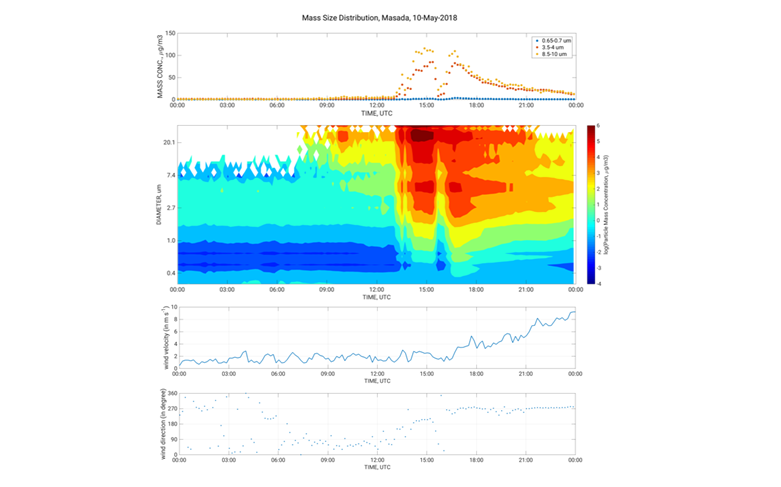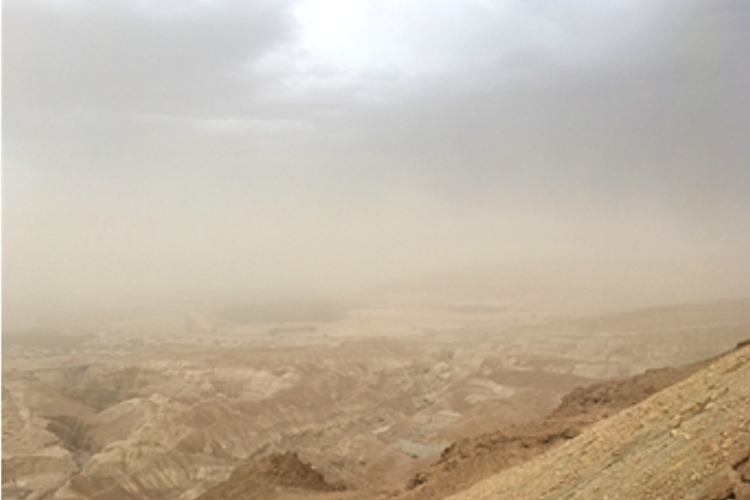Measurements of atmospheric dust concentration at the Dead Sea
In May 2018, the measuring network of the Institute of Meteorology and Climate Research at the Dead Sea was further expanded. Two further measuring stations were installed in the southern part of the Dead Sea. A meteorological station on the east side in Jordan and another energy balance station at the western shore of the Dead Sea in Israel, which can be used to determine not only weather and climate conditions but also the evaporation of water. The research focus is on the small-scale variation of the wind field in the valley, which is among other things influenced by the terrain configuration, and its influence on evaporation from the lake surface. Since evaporation is strongly dependent on wind speed, the characteristics of different wind systems in the region are of great importance. The measurements show that due to the complex terrain and the heterogeneous conditions in the valley, there are great differences between the western and eastern shores of the Dead Sea. The strong foehn events that regularly occur on the west side in the early evening can only rarely be observed on the east side. On the eastern side, however, a strong along-valley flow can be observed, which shows comparable wind speeds to the downslope winds and thus provide comparable conditions for evaporation.
| Fig.1: Mass concentration and relevant meteorological parameters measured in Masada on 10.5.2018. |
In addition, two of three planned aerosol spectrometers were mounted along a transect across the valley axis. Over a period of one year they measure the aerosol concentrations in 32 size classes. Outside the valley at an altitude of approx. 700 m above sea level, at the slope at 7 m above sea level (Fig. 1) and at the bottom of the valley at approx. 410 m below sea level. The data which is expected from the measurements can provide insight into the inner structure of dust storms that pass over the valley or through the valley. Furthermore, it is possible to analyse the background pollution of the atmosphere with desert dust and its dependence on height and stratification.
| Fig.2: New aerosol spectrometer at Masada measuring site and a dust storm at the Dead Sea. |
These data are needed to validate model simulations with the weather forecast system ICON-ART (ICOsahedral Nonhydrostatic - Aerosol and Reactive Trace gases) and to optimize the spatial resolution. The first measurements of a dust event at the beginning of May 2018 (Fig. 2, exemplary picture) already show promising results and interesting differences in dust pollution between the mountain ridge and the valley. A brief change in the wind direction along the valley axis causes a sharp drop in dust concentration within the valley during this period.
Current measurement values from Israel can be found at http://www.imk-tro.kit.edu/19.php
[Working group: Convective Systems]


